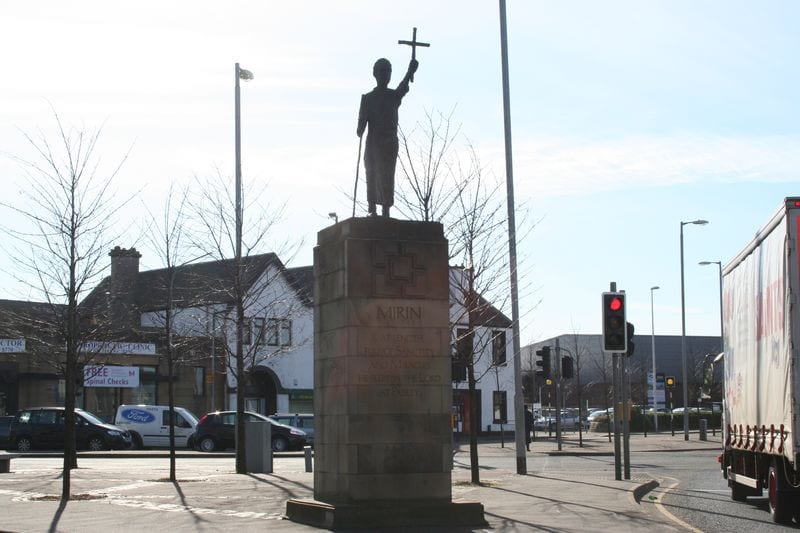Saint Mirin – Our Patron Saint
The name of our patron saint, St Mirin, features often in Paisley. First of all it is the name of the local football team St Mirren (note the different spelling) and also the name of St Mirren Street which runs over the underground St Mirin’s burn.
These together with St Mirin’s Cathedral are all dedicated in the name of this ancient revered saint.
So who was St Mirin and how did he become to be our patron saint? Well one ancient story tells us that Mirin was a native of the city of Patras in Greece. It was in this ancient city that he distinguished himself for his piety and learning. He left Patras in the company of another illustrious holy man, St Regulus.

With other holy men Mirin and Regulus helped bring the relics of St Andrew, our national patron saint, to Scotland. Mirin was appointed as Missionary to the West of Scotland. Mirin arrived at the place where Paisley now stands. Here he passed his latter days beside the banks of the burn which bears his name today, working miracles and preaching Christianity.
This legend tells us that the teachings of Mirin attracted many people. In his labours he gained four holy men as disciples, Barchanus, Malcomus, Petrus and Alanus. These four were to found the churches at Kilbarchan, Kilmacolm, Kilpeter and Kilallan (Houston). People came to hear Mirin’s wonderful stories, none more so than the prophet Merlin, who lived just up the road on the banks of the Clyde at Govan. This spot is still called Merlinford.
The second legend concerning Mirin is more widely accepted by historians. As a young man Mirin was brought by his parents to the great Monastery of Bangor. It had been founded in 558AD on the shore of Belfast Lough by the most revered of Irish saints, Saint Congal. Here Mirin was specially tutored by Congal. After receiving his education Mirin joined the brotherhood of monks and eventually became prior of the monastery. As prior, Mirin is on record as having entertained St Finian under whose teaching St Columba was reared. As St Mirin was a contemporary of St Columba and there was constant intercourse between Bangor and Iona, the two must have met. Bangor, like Iona, was a great missionary establishment and so it was that Mirin left his Irish home to come to Scotland in about 580AD.
